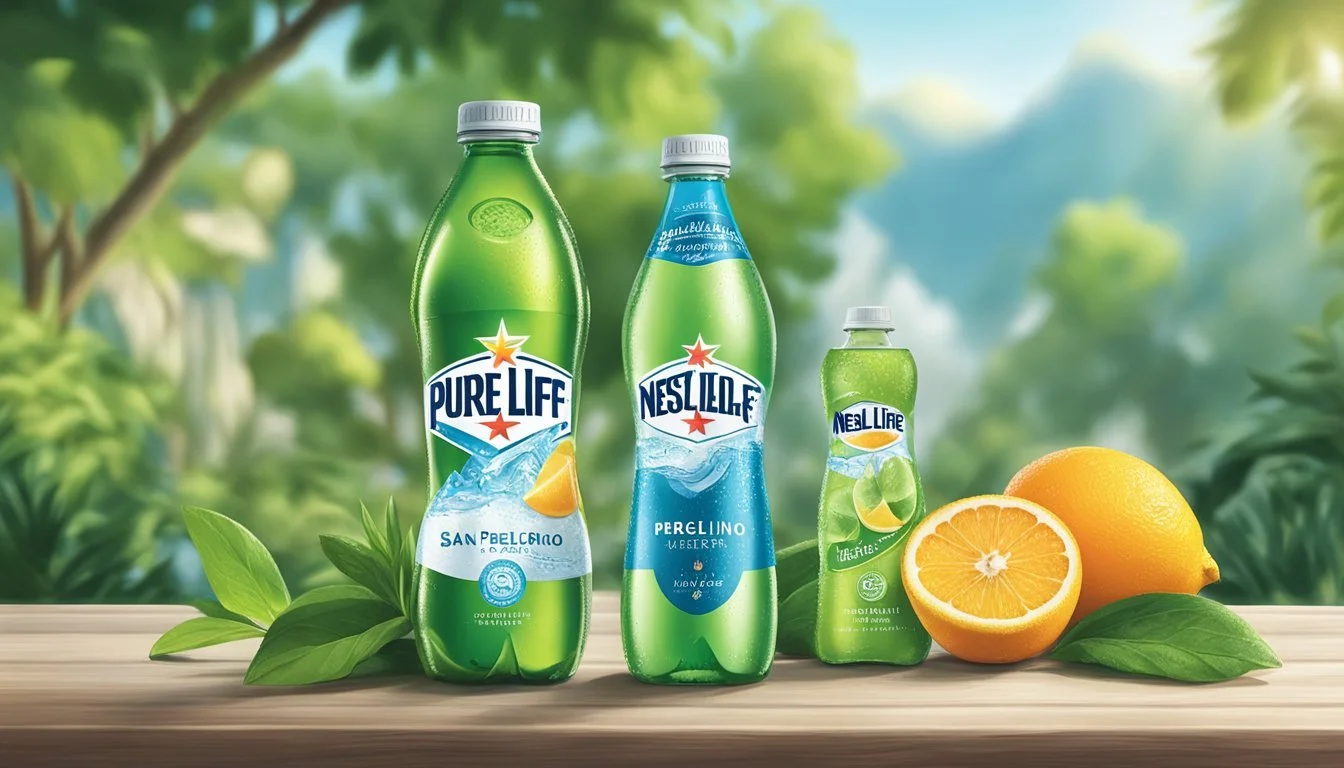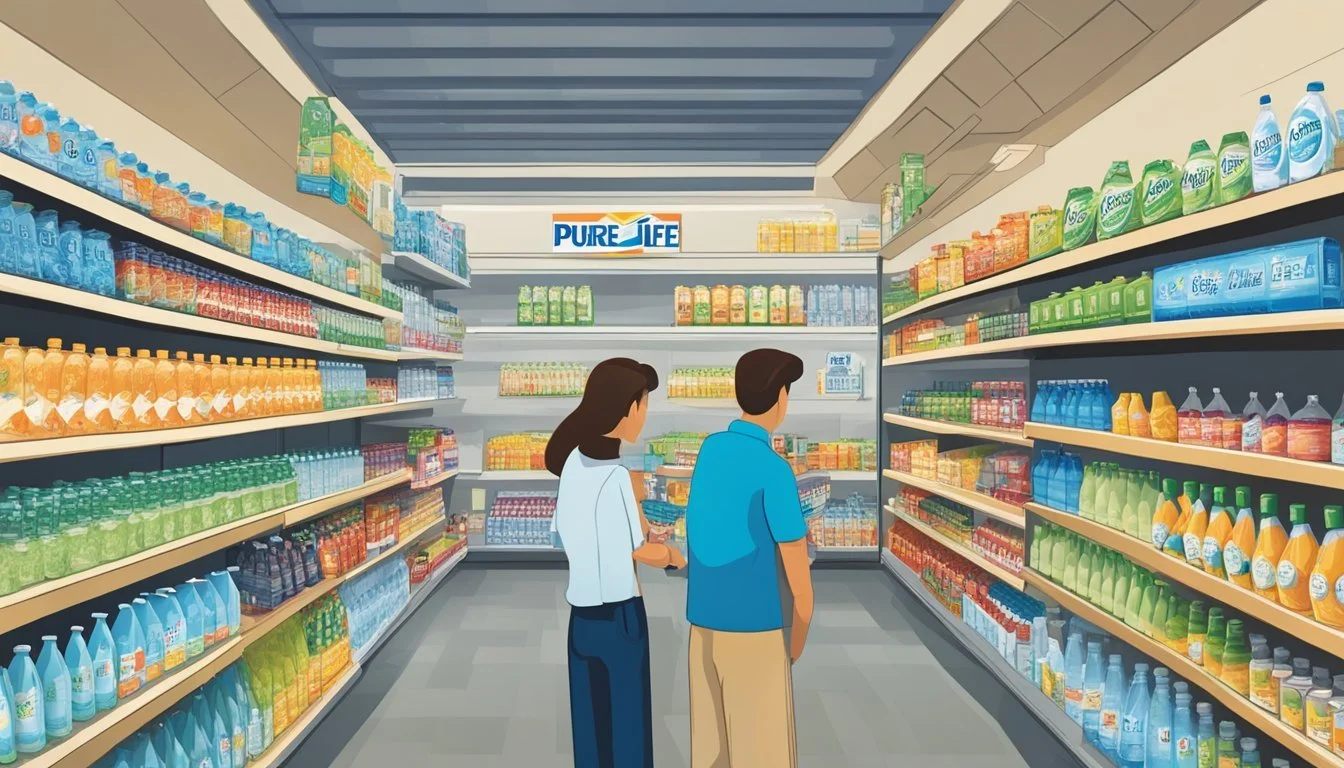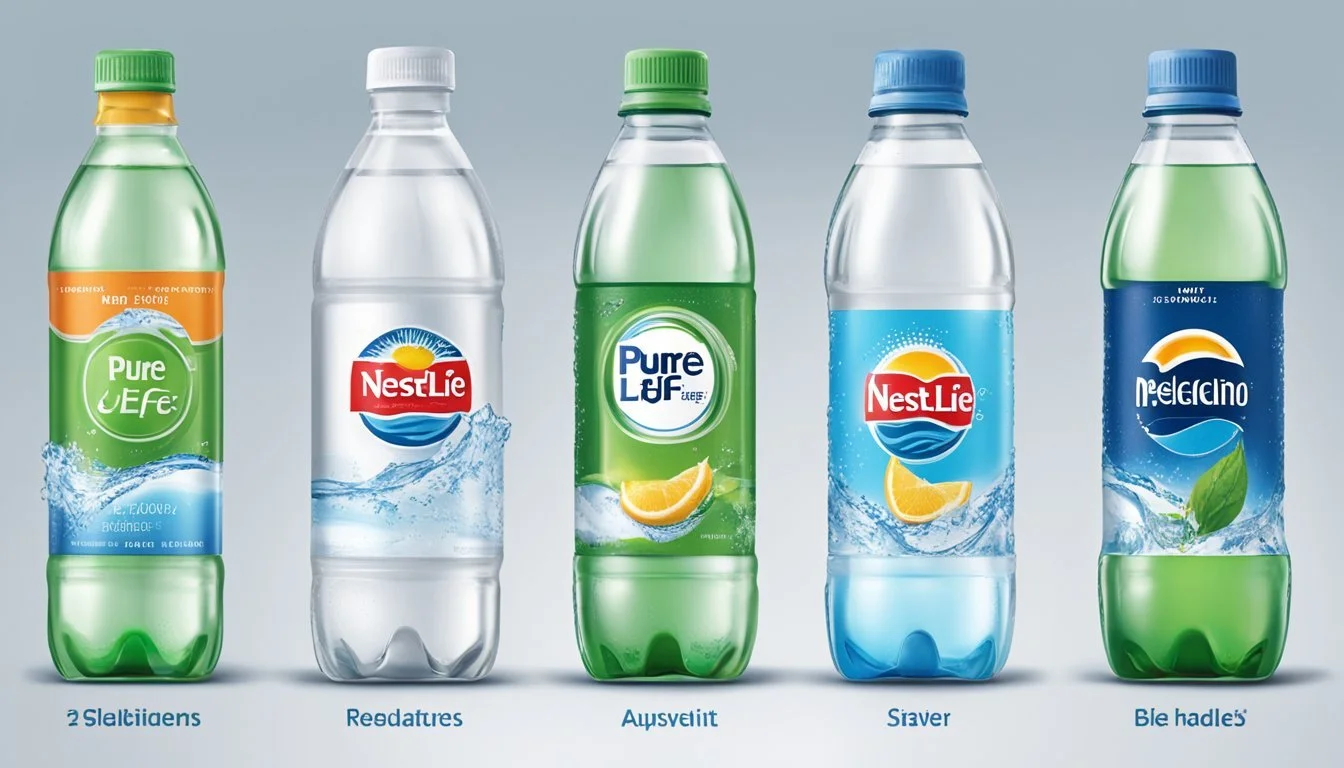Nestlé Pure Life vs. San Pellegrino
A Comprehensive Water Quality Comparison
When choosing bottled water, consumers often compare options based on taste, purity, and overall quality. Nestlé Pure Life and San Pellegrino represent two widely recognized brands in the bottled water market, but they cater to distinctly different preferences and concerns. Nestlé Pure Life, known for its affordability and widespread availability, positions itself as a healthy hydration choice suitable for everyday consumption. The brand emphasizes its 12-step quality process, aimed at ensuring a clean and safe product for a broad consumer base.
San Pellegrino, on the other hand, is often perceived as a premium brand, partly due to its association with fine dining and its Italian heritage. It is a sparkling mineral water that comes from a natural source, boasting a unique blend of minerals. As opposed to the more utility-focused Nestlé Pure Life, San Pellegrino is marketed as a more upscale choice, commonly served in restaurants and used to accompany gourmet meals.
While Nestlé Pure Life has faced criticism regarding the presence of microplastics in its products, with some studies indicating high concentrations of plastic particles, San Pellegrino's brand image remains closely tied to its origin and mineral content. Consumers looking to choose between these two brands must weigh the importance of factors like price, intended use, environmental impact, and taste preferences. Each brand serves different consumer needs, which is a crucial consideration for anyone making an informed choice about their bottled water purchase.
Understanding Bottled Water
Before delving into the specifics of Nestlé Pure Life and San Pellegrino, it is essential to grasp the fundamentals of bottled water, its types, sourcing methods, and the standards that govern its safety and quality.
Types of Bottled Water
Bottled water comes in various types, each defined by its origin or treatment process:
Spring Water: Derived directly from a natural spring, where water flows to the surface from an underground formation.
Mineral Water: Originates from a protected underground source and naturally contains at least 250 parts per million of total dissolved solids, including minerals and trace elements.
Carbonated Water: Also referred to as sparkling water, is infused with carbon dioxide gas under pressure to produce bubbles and fizz.
Electrolytes: Often added to bottled water to enhance taste and replenish minerals lost through sweat.
Sources and Sourcing
The source of bottled water plays a crucial role in its composition:
Public Water Source: Some bottled waters are sourced from public water systems, treated, and sold.
Groundwater: Includes aquifers and wells and is commonly used, especially when located near the bottling plant for cost efficiency.
Natural Spring: Water considered to be of high purity, emerging from the ground naturally without a pump.
Water Quality and Safety Standards
Bottled water is regulated to ensure safety and quality:
Contaminants: Bottled water is tested for contaminants, such as chlorine, lead, arsenic, heavy metals, and PFAS chemicals. The presence of plastic particles has also been noted in some brands.
EPA and States Regulations: In the United States, the Environmental Protection Agency (EPA) sets standards for tap water, while the Food and Drug Administration (FDA) ensures that bottled water meets similar safety standards.
Health Concerns: Regular testing for contaminants is critical due to their potential impact on health when consumed in significant quantities.
Nestlé Pure Life vs. San Pellegrino
In comparing Nestlé Pure Life and San Pellegrino, consumers often consider factors such as taste and quality, nutritional content, and environmental impact.
Brand Profiles
Nestlé Pure Life is a well-known water brand that offers affordability and accessibility. It is part of Nestlé Waters, the world's largest bottled water company. The water goes through a 12-step quality process and is sold in plastic bottles.
San Pellegrino is an Italian brand of mineral water that has been around since 1899. Known for its effervescence, San Pellegrino water is naturally enriched with calcium, magnesium, and other minerals and is sold in glass bottles, enhancing its premium image.
Taste and Quality Comparison
Nestlé Pure Life is described as a straightforward, clean-tasting water with no distinctive mineral content affecting its taste. In contrast, San Pellegrino is characterized by its fine bubbles and subtle mineral taste, which may be attributed to its natural carbonation and high levels of total dissolved solids, making it slightly acidic.
Health and Nutritional Content
When examining the health and nutritional content of these waters, San Pellegrino stands out for its mineral-rich profile, including calcium and magnesium, which contribute to daily dietary needs. The pH level of San Pellegrino is known to be acidic due to its carbonation. On the other hand, Nestlé Pure Life is often purified and might be categorized as alkaline water depending on the source and processing, aiming to deliver clean drinking water with minimal mineral content.
Environmental and Sustainability Considerations
The environmental impact of bottled water is critical. Nestlé Pure Life, predominantly sold in plastic bottles, has faced criticism for contributing to plastic waste. However, Nestlé has made commitments to improving recycling and reducing its carbon footprint. San Pellegrino, although packaged in glass bottles which are heavier and could lead to a higher carbon footprint during transport, is often considered more eco-friendly due to the recyclability of glass. Both brands are taking steps toward sustainability, but the environmental cost of bottled waters remains a significant concern.
Market and Consumer Insights
Navigating the bottled water market requires an understanding of consumer preferences, industry dynamics, and price sensitivities. This section delves into the market and consumer behaviors influencing the popularity of brands like Nestlé Pure Life and San Pellegrino.
Consumer Preferences
Consumers often choose bottled water based on a combination of taste, perceived quality, and specific health benefits. Brands such as Evian and Fiji have loyal customer bases due to their unique mineral compositions and taste profiles. San Pellegrino, an Italian brand known for its mineral-rich carbonated water, appeals to those seeking a sophisticated, sparkling alternative. On the other hand, Nestlé Pure Life is marketed towards families looking for safe, clean drinking water at an affordable price. It's not uncommon for consumers to also consider eco-friendliness, with brands like Boxed Water and Icelandic Glacial gaining traction due to their environmental commitments.
Industry Analysis
The bottled water industry is highly competitive with several large brands like Dasani, Poland Spring, and Aquafina dominating the market, alongside premium brands such as Voss and Perrier. The trend toward healthier lifestyles has fueled the growth of the industry, with a notable rise in the consumption of alkaline water brands like Essentia and Core Hydration. Additionally, the demand for water with added benefits has seen Penta and Eternal Water emerging as key contenders. This market is also influenced by the increasing consumer focus on flavored and functional waters, where brands like LaCroix have made significant strides.
Price Comparisons
Brand Average Price per Liter Nestlé Pure Life $1.00 - $2.00 San Pellegrino $1.50 - $3.00 Dasani $1.00 - $2.00 Fiji $2.00 - $3.50 Voss $3.00 - $5.00
Price plays a critical role in consumer decisions. Nestlé Pure Life is typically positioned as a more budget-friendly option, appealing to cost-conscious consumers. In contrast, San Pellegrino is often priced higher due to its premium positioning. The bottled water market sees a range of pricing strategies, with premium brands like Voss and Fiji priced significantly higher than mainstream options such as Dasani and Aquafina. Consumers are known to weigh the price against perceived value, which not only includes product quality but considerations like brand image and packaging, leading to varied preferences across different market segments.
Safety and Regulatory Aspects
When comparing Nestlé Pure Life and San Pellegrino bottled water, it is critical to examine the safety and regulatory aspects that govern their production. The Environmental Protection Agency (EPA) sets standards and regulations ensuring bottled water safety, which these brands must adhere to. This section will explore the specific regulatory standards and quality control measures that play vital roles in maintaining the safety of bottled water.
Regulation Standards
Nestlé Pure Life and San Pellegrino are subject to various regulations that ensure the safety and quality of bottled water. They must comply with standards set by the EPA and the Food and Drug Administration (FDA). The FDA classifies bottled water under the category of "food," and thus, it must meet the FDA's food safety standards, in addition to specific bottled water regulations.
The EPA's regulations target contaminants, setting a benchmark called Maximum Contaminant Levels (MCLs).
The FDA enforces standards of identity, quality, and good manufacturing practices.
Both brands are required to display information such as source, type, and any applicable treatment on their labels to inform consumers properly.
Quality Control Measures
Effective quality control measures are imperative for establishing and maintaining the safety of bottled water products. Both Nestlé Pure Life and San Pellegrino implement several quality assurance practices to ensure their products meet safety and quality standards.
Testing Procedures: Bottled water companies must regularly test for contaminants like microplastics, arsenic, and chemicals such as PFAS. Testing ensures the water meets or exceeds regulatory and industry standards.
Certifications: Achieving certifications from independent bodies, such as NSF International or the International Bottled Water Association (IBWA), can demonstrate a brand's commitment to quality and safety.
By adhering to stringent quality control and regulatory compliance, bottled water brands like Nestlé Pure Life and San Pellegrino aim to deliver safe, high-quality products to their consumers.
Health Considerations of Bottled Water
When comparing bottled water brands such as Nestlé Pure Life and San Pellegrino, it is important to assess their impact on health, including the presence of electrolytes, the purification process used, and how they compare to tap water in terms of public health concerns.
Benefits and Risks
Electrolytes: A key health consideration for bottled water is the electrolyte content. Electrolytes such as potassium, magnesium, and sodium are crucial for hydration and maintaining the body's pH balance. Nestlé Pure Life contains low levels of added minerals for taste, while San Pellegrino, a sparkling mineral water, is naturally rich in minerals, which could be advantageous for electrolyte replenishment.
Reverse Osmosis: Nestlé Pure Life utilizes reverse osmosis for water purification, a process that removes contaminants but also strips away beneficial minerals. Post-filtration, certain minerals are added back for improved taste and to adjust the pH level, which can provide a balance between clean drinking water and nutrient replenishment.
Public Health Concerns: Studies have detected microplastics in various bottled water brands, including Nestlé Pure Life. While the health implications of microplastics are still being studied, they pose a potential risk. San Pellegrino has also been part of such studies, with variations in microplastic content found within the same brand.
Comparative Analysis to Tap Water
Hydration: Tap water and bottled water both provide essential hydration. However, the mineral content of bottled water may offer additional benefits for hydration when compared to some municipal water sources.
Clean Drinking Water: Bottled water like Nestlé Pure Life claims high purity standards, potentially making it a preferred option for individuals concerned about pollutants in municipal water. Meanwhile, San Pellegrino's natural mineral content offers a unique profile of clean drinking water with added health benefits from its electrolytes.
Bubbly Beverages: Consumers might opt for bubbly beverages like San Pellegrino for their taste and effervescence, although the carbonation can cause bloating or discomfort for some individuals.
Benefits and Risks: Bottled water is regulated for safety, but not always free from contaminants. Tap water also undergoes rigorous testing and, in many cases, might be equally safe and more cost-effective.
Public Health Concerns: While both types of bottled water provide hydration, the environmental impact of plastic bottles and the unresolved issue of microplastic contamination raise public health discussions. In contrast, tap water usage has a significantly lower environmental impact.
Final Thoughts
When consumers face the choice between Nestlé Pure Life and San Pellegrino, several factors come into play, including taste preference, purity levels, and environmental impact.
Nestlé Pure Life is known for its purification process and affordability. It is an accessible option for daily hydration and its 12-step purification process underscores a commitment to safety and cleanliness. For those concerned with microplastics, it should be noted that studies have found plastic traces in many bottled waters, with Nestlé Pure Life mentioned as one of them.
San Pellegrino, on the other hand, is a sparkling mineral water often associated with fine dining experiences. It provides a distinct taste that comes from its naturally occurring minerals and carbonation. Its reputation speaks to those seeking not just hydration but a particular gourmet experience. One should be mindful that it is typically more costly and the carbonation may not be suitable for all consumers.
Category Nestlé Pure Life San Pellegrino Primary Attribute Affordable, purified Gourmet, natural minerals Taste Neutral, clean Unique, carbonated Cost Budget-friendly Premium pricing Environmental Concerns over plastics Glass packaging option
Readers should consider these points in light of their personal preferences and needs. One should weigh the benefits of taste versus the necessity for portability and budget when making their choice. Those with environmental concerns might prefer reusable water sources, but if choosing bottled water, reflecting on the brand’s sustainability practices and packaging solutions can guide a more informed decision.




